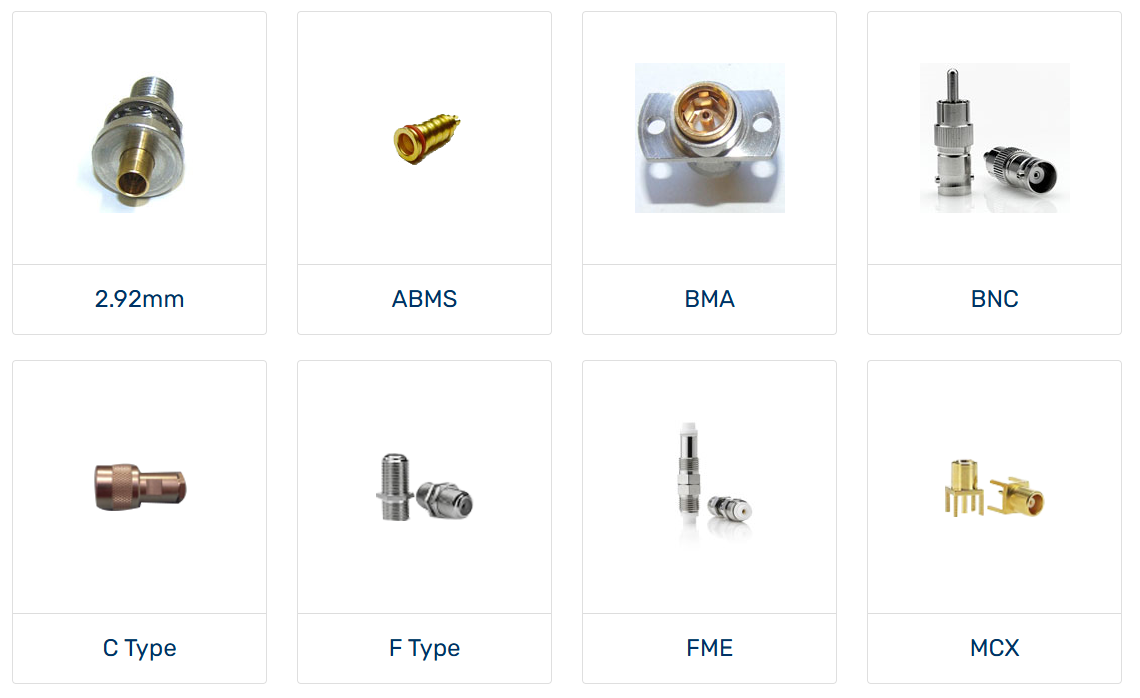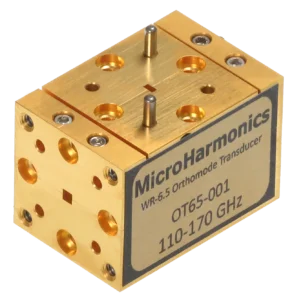In the world of RF (radio frequency) and microwave engineering, connectors are critical components for ensuring proper signal transmission between various devices. These connectors come in a variety of sizes and specifications, each suited for particular applications. Among the most commonly used connectors are 3.5mm, 2.92mm, SMA, 2.4mm, and 1.85mm connectors. While these connectors are used for high-frequency signals, they differ in their mechanical and electrical characteristics. Understanding how to mate and work with these connectors is vital for engineers working in industries such as telecommunications, aerospace, and testing.
1. Understanding the Connectors
Before diving into the mating process, it is important to understand the specifics of each connector type.
3.5mm Connectors
The 3.5mm connector is one of the most widely used RF connectors due to its reliable performance at high frequencies. Typically designed for use up to 34 GHz, 3.5mm connectors offer excellent electrical performance with low insertion loss, making them ideal for laboratory and testing equipment. These connectors have a characteristic impedance of 50 ohms and are commonly used in signal testing and high-frequency applications.
2.92mm Connectors
2.92mm connectors are similar to 3.5mm connectors but are designed to provide better performance at even higher frequencies (up to 40 GHz). They are often referred to as K connectors and are widely used in applications requiring high-frequency signal integrity. The key difference between 2.92mm and 3.5mm connectors is the slightly smaller diameter of the 2.92mm centre pin, which allows for tighter performance tolerances.
SMA Connectors
SMA (Subminiature Version A) connectors are another popular type used in RF applications. These connectors are used for frequencies up to 18 GHz but offer excellent durability and performance at lower frequencies. SMA connectors are widely available in both male and female variants and are known for their screw-on coupling mechanism. They are suitable for medium- and high-frequency applications and are often used in telecommunications, antennas, and testing setups.
2.4mm Connectors
The 2.4mm connector is a smaller, high-performance connector that can handle frequencies up to 50 GHz. It is often used in research and development environments, high-frequency testing, and precision instruments. Due to their compact size and low-loss performance, 2.4mm connectors are well-suited for applications that require tight tolerances and minimal signal degradation.
1.85mm Connectors
The 1.85mm connector is even smaller than the 2.4mm and is used in very high-frequency applications, typically up to 65 GHz. These connectors are particularly useful for advanced microwave test equipment, precision instruments, and cutting-edge telecommunications technologies. Their compact size allows for high-density applications where space is limited.
2. Mating Connectors: Compatibility and Considerations
While each of these connectors is designed for high-frequency performance, mating them requires attention to detail regarding their specific mechanical and electrical properties.
Mechanical Compatibility
- Connector Size: The physical size of the connector is the most obvious difference. Mating connectors with different physical diameters requires care, as each type is designed to interface with its specific counterpart.
- 3.5mm connectors have a larger diameter than the 2.92mm, 2.4mm, and 1.85mm connectors, so mating a 3.5mm connector to a smaller connector is not feasible without an adapter.
- Similarly, 2.92mm connectors are too small to mate directly with 3.5mm connectors without using an intermediary adapter.
Gender and Thread Compatibility
- Most RF connectors come in male and female types, with the male connector having a central pin and the female connector having a receptacle. It’s important to ensure that the connectors are correctly matched in terms of gender.
- Thread Type: SMA connectors, for example, use a threaded coupling mechanism, which provides a more secure connection. The threading must be consistent between the mating connectors.
- For example, a male SMA connector will thread into a female SMA connector, but will not mate with other types of connectors like 3.5mm or 2.92mm unless specifically designed adapters are used.
Electrical Compatibility
- Impedance: Connectors like SMA, 3.5mm, and 2.92mm are typically 50 ohms in impedance, which is standard for most RF applications. However, the connectors must match in impedance to avoid signal reflections or losses. Mismatched impedance can result in signal degradation and even permanent damage to equipment.
- It’s important to verify that the mating connectors share the same impedance rating before establishing a connection.
- Frequency Handling: Each connector type is designed to operate efficiently up to certain frequencies. For example, 3.5mm connectors are typically used for applications up to 34 GHz, while 2.4mm and 1.85mm connectors can handle much higher frequencies. Mating connectors that are rated for different frequency ranges might result in suboptimal performance.
3. Adapting Between Connector Types
Given the differences in size, threading, and performance capabilities, adapters are often used to mate connectors with differing specifications. These adapters allow for the connection of two different types of connectors and are available for most standard combinations.
For example:
- A 3.5mm to SMA adapter will allow a 3.5mm cable to connect to an SMA port.
- A 2.4mm to 1.85mm adapter will facilitate a connection between these two smaller, higher-frequency connectors.
Using adapters is common practice in testing and prototyping, but engineers should be cautious about introducing additional losses, reflections, and potential signal degradation when using adapters, especially at high frequencies.
4. Best Practices for Mating RF Connectors
When mating RF connectors, especially high-frequency ones like 3.5mm, 2.92mm, SMA, 2.4mm, and 1.85mm connectors, several best practices can ensure reliable and optimal performance:
- Cleanliness: Always keep connectors clean and free from dust, dirt, and contaminants. Dirt on the connector surface can increase the loss and affect signal quality.
- Torque Limitation: When tightening connectors, apply the recommended torque. Over-tightening can damage the connectors or lead to performance degradation, while under-tightening can result in poor contact and increased signal loss.
- Cable Compatibility: Ensure that the cables you are using are compatible with the connectors in terms of size and impedance. Using cables with improper specifications can affect the overall performance.
- Test Before Use: If possible, perform a continuity check with a multimeter or use a network analyzer to ensure that the mating is secure and that the electrical path is optimal.
5. Conclusion
Mating RF connectors like 3.5mm, 2.92mm, SMA, 2.4mm, and 1.85mm requires a thorough understanding of their mechanical and electrical characteristics. Whether you’re using them for laboratory testing, telecommunications, or advanced microwave applications, ensuring compatibility between connectors is crucial for optimal performance.
With the correct adapters, cleanliness, and attention to frequency handling and impedance, engineers can successfully mate connectors from different families, ensuring robust and reliable signal transmission in high-frequency systems.



